No surprises on Cartel activity, but then again, the real culprits are the the Demand Drivers over the border. Drug laws aren\’t the enemy recalcitrant hedonists are!
But hey! Health care and Welfare will cover the damage…won\’t they?
What doctors say
By DR. ED GOGEK In the Philadelphia Inquirer
This article was published June 5, 2015
State legislatures across the country are legalizing medical marijuana, but the nation\’s physicians aren\’t requesting these laws. The American Academy of Pediatrics and the American Society of Addiction Medicine are both against medical marijuana laws. The American Medical Association doesn\’t support them, either.
Groups representing patients aren\’t behind these laws. The American Cancer Society hasn\’t demanded them, and the Glaucoma Foundation even warns patients against using the drug.
Instead, the demand comes from groups like the Drug Policy Alliance and Marijuana Policy Project. These are not medical organizations. They are part of a pro-legalization lobby supported by pro-marijuana billionaires. And they\’ve apparently convinced state legislators to ignore some very serious problems.
The biggest problem is that medical marijuana laws are responsible for most of the growth in adolescent use. According to the University of Michigan\’s \”Monitoring the Future\” survey, teen use in the United States surged between 2005 and 2011. But it didn\’t surge equally in all states.
Data from the National Survey on Drug Use and Health shows that the number of teens who smoked pot increased by 33 percent in medical marijuana states but only by 6 percent in the rest of the country. In 2005 only about 20 percent of the U.S. population lived in medical marijuana states, yet those states accounted for more than two-thirds of the increase in adolescent use between 2005 and 2011. If it weren\’t for states with medical marijuana laws, teen use would have barely increased at all.
There\’s also evidence that even among adults nearly all the \”medical\” marijuana goes to drug abuse. The largest survey of medical marijuana patients, published in 2014 in the Journal of Global Drug Policy and Practice, found that only 6 percent reported using marijuana for cancer, AIDS, glaucoma, Alzheimer\’s, Crohn\’s, hepatitis C, or amyotrophic lateral sclerosis, also known as Lou Gehrig\’s disease. The vast majority–91 percent–got their marijuana for pain.
Not only are these laws harmful, but they\’re completely unnecessary. While some seriously ill patients are helped by marijuana, there are four prescription cannabinoid medications that are just as helpful. So there\’s no reason to use marijuana itself as medicine.
Two of these medicines, Marinol and Cesamet, are available by prescription in the United States. A third, Epidiolex, or pure cannabidiol, is available for children with seizures through a special Food and Drug Administration program. The fourth, Sativex, is in the last stages of approval.
Some of these medicines have fewer side effects than marijuana and are longer-acting, which means they are better for genuine patients who don\’t want to be stoned all the time. However, the biggest advantage of prescription cannabinoids is that they\’re much less likely to be abused or diverted to teenage use than medical marijuana is.
State legislators who want what\’s best for the country should ignore the pro-marijuana lobbyists and instead listen to the AMA, the Academy of Pediatrics, and the Society of Addiction Medicine. If we want to rein in teenage marijuana use and prevent widespread abuse of the drug, instead of passing new state medical marijuana laws, we should get rid of the ones we already have.
————v————
Dr. Ed Gogek is an addiction psychiatrist. He wrote this for the Philadelphia Inquirer.Editorial on 06/05/2015
Report of visit by a Committee delegation to examine the impact of Portuguese approach to the possession of certain drugs!
http://www.drugsandalcohol.ie/24202/1/Justice%20Comm%20Final-Report—Lisbon-2015.pdf
Comments
“Such reports are a joke. A three day visit to hear reports from those with a vested interest in a good outcome. No evidence sited. Instead of a junket tour of Portugal a review of the literature might have been more informative.
The \”dramatic fall\” in HIV cases has no relationship to any policy regarding drugs. Firstly, as at 2011 Portugal had the highest prevalence of any Western European country at .7% compared to .2 to .3%. If the drug policy had any impact one would have thought that 15 years would have been long enough to reduce HIV to European average levels. Moreover only 4.2% of infections were considered to be due to injecting drugs. Put these two stats together and if all injecting drug use was eliminated the best result would be less than a 4% decline among drug users. That is an overall drop of 0.02%. If it has declined then other factors must be responsible.
Also with 13.5% unemployment and much higher among youth it is doubtful if the subsidised job scheme for addicts has had any impact despite the positive spin.
Stats such as average price for drugs may indicate a shift in demand, but crime still exists to supply the drugs. So what use the delegations visit if their aim was to deal with drug selling crime gangs…Utter nonsense. “
Dr C. (Australia)
“Interesting! I wonder why they did not tell us how many addicts are still experiencing death due to drugs or how many are no longer willing to go to treatment or improve their living conditions.”
Dr. C.F. (U.S.A)
“Our Portuguese colleagues say this is a complete crock — it has been a dismal failure.”
Dr A.R. (Australia)
For a look at the evidence go to
https://www.dontlegalizedrugs.com/files/images/pages/TheFailedPortugeseExperiment-The%20Evidence.pdf
It’s Time to Re-Think Prevention: Increasing Percentages of Adolescents Understand They Should Not Use Any Addicting Substances
\”These data have been there all along but the analysis resulting in this finding is completely new. Among 12th graders, the percentage of students who never used alcohol, tobacco, marijuana or other drugs in their lifetimes rose from 2.9% in 1983 to 25% in 2014. The percentage of 12th graders who did not use any alcohol, tobacco, marijuana or other drugs in the prior 30 days rose from 16.1% in 1982 to 49.6% in 2013. Similar sizeable positive changes are reported for 8th and 10th graders who were first surveyed in 1991. Problems with alcohol, tobacco, and other drugs remain gravely serious. However, this new evidence of an increasing percentage of American youth who choose not to use any of these addicting substances gives new hope for the future.\”
For complete article download http://www.ibhinc.org/pdfs/IBHCommentaryAdolescentsNoUseofSubstances.pdf
THE IMPACT OF SUBSTANCE ABUSE IN OUR SOCIETY
Volume 9, Issue 2 – Summer 2015: http://globaldrugpolicy.org/
CHICAGO (AP) — Medical marijuana has not been proven to work for many illnesses that state laws have approved it for, according to the first comprehensive analysis of research on its potential benefits.
The strongest evidence is for chronic pain and for muscle stiffness in multiple sclerosis, according to the review, which evaluated 79 studies involving more than 6,000 patients. Evidence was weak for many other conditions, including anxiety, sleep disorders, and Tourette\’s syndrome and the authors recommend more research.
The analysis is among several medical marijuana articles published Tuesday in the Journal of the American Medical Association. They include a small study suggesting that many brand labels for edible marijuana products list inaccurate amounts of active ingredients. More than half of brands tested had much lower amounts than labeled, meaning users might get no effect.
BY LINDSEY TANNER : AP MEDICAL WRITER Jun 23, 12:01 PM EDT (for full article go to….http://hosted.ap.org/dynamic/stories/U/US_MED_MEDICAL_MARIJUANA_RESEARCH_5_THINGS?SITE=AP&SECTION=HOME&TEMPLATE=DEFAULT&CTIME=2015-06-23-11-51-43
The Colorado Supreme Court today issued its long-awaited and very important decision in the Brandon Coats v. Dish Network case involving a young man, severely disabled, who was terminated from his employment because he used medical marihuana that, he argued, was a “lawful activity” under state law.
The Court’s decision, 6-0, that affirmed a lower court’s verdict, found that the federal law is relevant in determining what is considered “lawful” under Colorado’s “lawful activities statute.” In other words, Coats’ argument that he was engaging in lawful activities under Colorado state law did not shield him from violating federal law and, as a consequence, being in violation of the state’s lawful activities statute.
The Court’s opinion is important not only because it was reached by the Colorado Supreme Court, but also because many other states considering adopting similar marihuana legislation as Colorado will now perhaps reconsider doing so. This also may influence the present case involving a motion before the US Supreme Court by OK and NE asking permission to file suit against CO for claims arising from what is claimed to be damages related to an unconstitutional state statute permitting the production and distribution of marihuana for recreational purposes, etc.
This is an important decision on several levels, not the least of which is how it will affect employment law. Go here to read the Court’s decision: http://extras.mnginteractive.com/live/media/site36/2015/0615/20150615_085459_coats-vs-dish.pdf.
Drug Watch International

